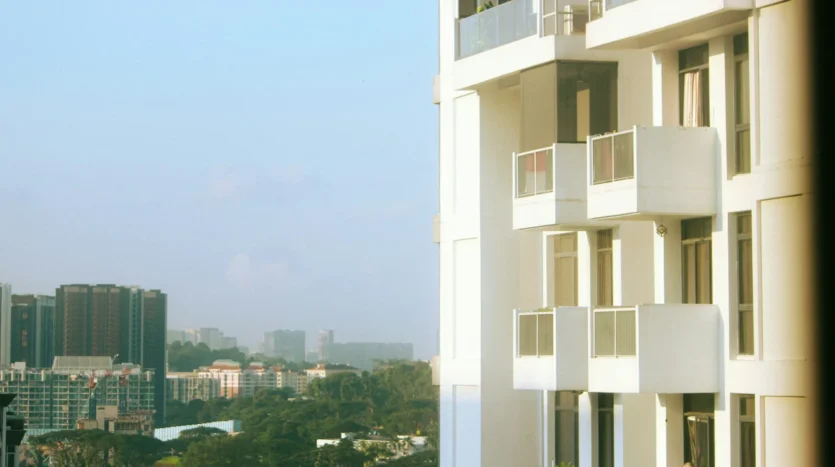Best Areas to Live in Singapore: Which Apartment Neighborhood Suits You?
Best Singapore Apartment Neighborhood
Choosing where to live in Singapore is one of the most important decisions you can make, especially if you are moving to the city as an expatriate or planning a long-term stay. With nearly 1.7 million foreigners living in Singapore as of 2023 and rental prices rising by over 30 percent in the last two years according to URA (Urban Redevelopment Authority) data, competition for good apartments is high. For newcomers, the question is rarely whether to rent, but rather where to rent. Each neighborhood offers a different lifestyle, level of convenience, and price point. Understanding these differences will help you find a location that truly matches your priorities, whether you value proximity to the Central Business District, family-friendly amenities, or more affordable options in the suburbs.
In this guide, we will take a detailed look at the best areas to live in Singapore. We will cover what makes each neighborhood unique, how much you can expect to pay for an apartment, and who it suits best, so you can make an informed decision.
Factors to Consider When Choosing a Neighborhood in Singapore
Before we dive into specific areas, it is worth looking at the main factors that influence where people choose to live.
Proximity to Work and MRT Connectivity
Singapore has one of the most efficient public transport systems in Asia, and the MRT is the backbone of daily commuting. Many professionals choose to live near an MRT line that provides a direct connection to their workplace. Central locations like Orchard or Marina Bay mean shorter commutes, while suburban areas often trade longer travel times for larger living spaces.
Lifestyle and Amenities
Your lifestyle priorities matter as much as your commute. Do you want to be near high-end shopping and fine dining, or would you prefer a neighborhood with open parks and schools? For many expats, neighborhoods like Holland Village are attractive because they offer a balance of both.
Budget and Rental Prices
Rent in Singapore varies dramatically. Luxury condominiums in Marina Bay can command upwards of SGD 9,000 per month for a three-bedroom unit, while a similar-sized condo in Punggol may cost less than half that. Understanding your budget range will help narrow your options quickly.
Family Needs
For families, factors like safety, nearby schools, and community facilities take priority. Neighborhoods such as Bukit Timah and East Coast are highly popular with families because of their space, greenery, and access to international schools.
Best Central Areas for Professionals and Expats
Living in central Singapore is convenient and prestigious. These areas are ideal for those who want to be near work and entertainment, though the trade-off is higher rental costs.
Orchard Road and River Valley
Few addresses in Singapore are as iconic as Orchard Road. Known for luxury malls, five-star hotels, and stylish high-rise apartments, it remains a magnet for high-income professionals and expats. Rental prices here are among the highest, with one-bedroom condos starting from around SGD 4,000 and three-bedroom units often exceeding SGD 8,000 per month. River Valley, which is just adjacent, offers a slightly quieter but equally upscale alternative. Both areas are well-connected by Orchard and Somerset MRT stations, making commuting easy.
Marina Bay and CBD
For those working in finance or corporate sectors, Marina Bay and the Central Business District are unbeatable in terms of convenience. Imagine walking from your apartment to your office tower in less than ten minutes. Here, you will find ultra-modern condominiums with sweeping skyline or waterfront views. Rental prices reflect this prestige, often between SGD 4,500 and SGD 6,500 for a one-bedroom apartment, with larger units crossing SGD 9,000. Bayfront and Raffles Place MRT stations make the area highly accessible. This is a neighborhood for professionals who want to minimize commuting time and enjoy a lifestyle of luxury.
Tanjong Pagar and Outram
Tanjong Pagar has transformed into a vibrant mix of modern condominiums and historic shophouses. It has a slightly more eclectic atmosphere compared to the formality of Marina Bay, with trendy cafes, boutique gyms, and a lively food scene. Outram, just next door, is also gaining popularity thanks to its cultural vibe and good connectivity. Rentals are slightly more affordable here, with one-bedroom units around SGD 3,500 to 4,800.
Read also: Top Apartment Rental Websites in Singapore for Professionals
Family-Friendly Residential Neighborhoods
If you are moving with children or simply want a more spacious and community-oriented environment, these neighborhoods are particularly appealing.
Holland Village and Bukit Timah
Holland Village is often described as the “expat hub” of Singapore. Known for its laid-back charm, it offers a mix of condos, townhouses, and access to international schools. Bukit Timah, nearby, is surrounded by greenery and has some of the island’s most prestigious addresses. Rental prices for three-bedroom condos typically fall between SGD 6,000 and 8,500, while one-bedroom units are around SGD 3,500 to 4,500. Holland Village MRT and Botanic Gardens MRT make these areas accessible, while families benefit from the parks and reputable schools nearby.
East Coast (Katong and Siglap)
If you want more space and a relaxed lifestyle, the East Coast is an excellent choice. The area has larger apartments, family-sized condominiums, and a vibrant food culture, with everything from local hawker centers to international dining options. Families love the seaside atmosphere and outdoor lifestyle, with cycling paths and parks along East Coast Park. Rentals are generally more affordable than central areas, with one-bedroom units around SGD 2,800 to 3,800 and three-bedroom condos between SGD 5,500 and 7,000. Once the Marine Parade MRT stations on the Thomson-East Coast Line are fully operational, connectivity will improve even further.
Novena and Thomson
Novena and Thomson strike a balance between central living and suburban comfort. These neighborhoods are known for their healthcare facilities, malls, and proximity to reputable schools. Rental prices are moderate, typically around SGD 3,200 to 4,200 for a one-bedroom and SGD 6,000 to 7,500 for a three-bedroom condo. Novena MRT and Upper Thomson MRT provide good access to other parts of the island.
Affordable Yet Convenient Options
Not everyone wants to spend half their income on rent, and thankfully, Singapore has suburban neighborhoods that are both affordable and comfortable.
Punggol and Sengkang
Once considered far-flung, Punggol and Sengkang have developed rapidly. They are popular among young families thanks to new condominiums, waterfront parks, and plenty of family-oriented facilities. Rentals are among the most affordable, starting at around SGD 2,200 for a one-bedroom and SGD 3,500 for a three-bedroom unit. The MRT and LRT systems connect these towns well to the rest of Singapore.
Woodlands and Yishun
Located in the north, Woodlands and Yishun provide even more affordable living options. Rentals here start at SGD 2,000 for a one-bedroom and about SGD 3,200 for a three-bedroom apartment. Woodlands has become increasingly attractive since the opening of the Thomson-East Coast Line, improving connectivity to central Singapore. Both neighborhoods are spacious and suitable for larger families looking for value.
Emerging and Trendy Areas
For those who want to invest in an area with future growth potential, a few neighborhoods stand out.
Jurong Lake District
Jurong is being developed into Singapore’s second Central Business District. This transformation is already attracting attention from both professionals and investors. The area has large malls such as Westgate and JEM, as well as new condominiums with lakeside views. Rentals are still moderate, ranging from SGD 2,800 to 3,500 for one-bedroom units and about SGD 5,000 to 6,200 for three-bedroom apartments.
Paya Lebar and Geylang
Once overlooked, Paya Lebar is now a major business and commercial hub with new office towers and retail centers. Rentals here are still relatively affordable, averaging SGD 2,500 to 3,200 for one-bedroom apartments and SGD 4,500 to 6,000 for three-bedroom units. Geylang, traditionally known for its cultural heritage, is also seeing renewed interest from younger professionals thanks to its proximity to the city and food culture.
Comparing Apartment Rental Prices by Neighborhood
To put it simply, central locations such as Orchard, Marina Bay, and the CBD are the most expensive, often starting from SGD 4,500 per month for small units. Family-focused areas like Holland Village, East Coast, and Novena range from SGD 3,500 to 7,500 depending on size. Suburban towns such as Punggol and Yishun are more budget-friendly, starting at around SGD 2,000 for smaller apartments. Emerging districts like Jurong and Paya Lebar offer mid-range options with strong growth potential.
Tips for Finding the Right Apartment in Singapore
Working with a property agent can make the process easier, especially for newcomers who are unfamiliar with local rental rules. Agents can help negotiate lease terms, which usually run for one or two years, and explain the standard deposit requirements. If you prefer to search independently, portals like PropertyGuru and 99.co provide extensive listings. Always visit the apartment in person before signing, and check for important details such as the condition of facilities, noise levels, and proximity to transport.
Final Thoughts
The best area to live in Singapore ultimately depends on what matters most to you. If you are a professional working in the CBD, Marina Bay or Orchard will save you hours in commuting time, although they come with a higher price tag. Families will find more space and community amenities in areas like Holland Village, East Coast, or Bukit Timah. For those on tighter budgets, suburbs like Punggol, Sengkang, or Woodlands provide modern living without breaking the bank, while Jurong and Paya Lebar represent emerging areas with exciting potential.
Singapore offers something for every lifestyle and budget. The key is to match your housing choice to your long-term priorities, whether that means convenience, affordability, or lifestyle amenities. With a clear understanding of the options, you can choose a neighborhood that feels like home from the very beginning.
Featured Image by Joylynn Goh on Unsplash












